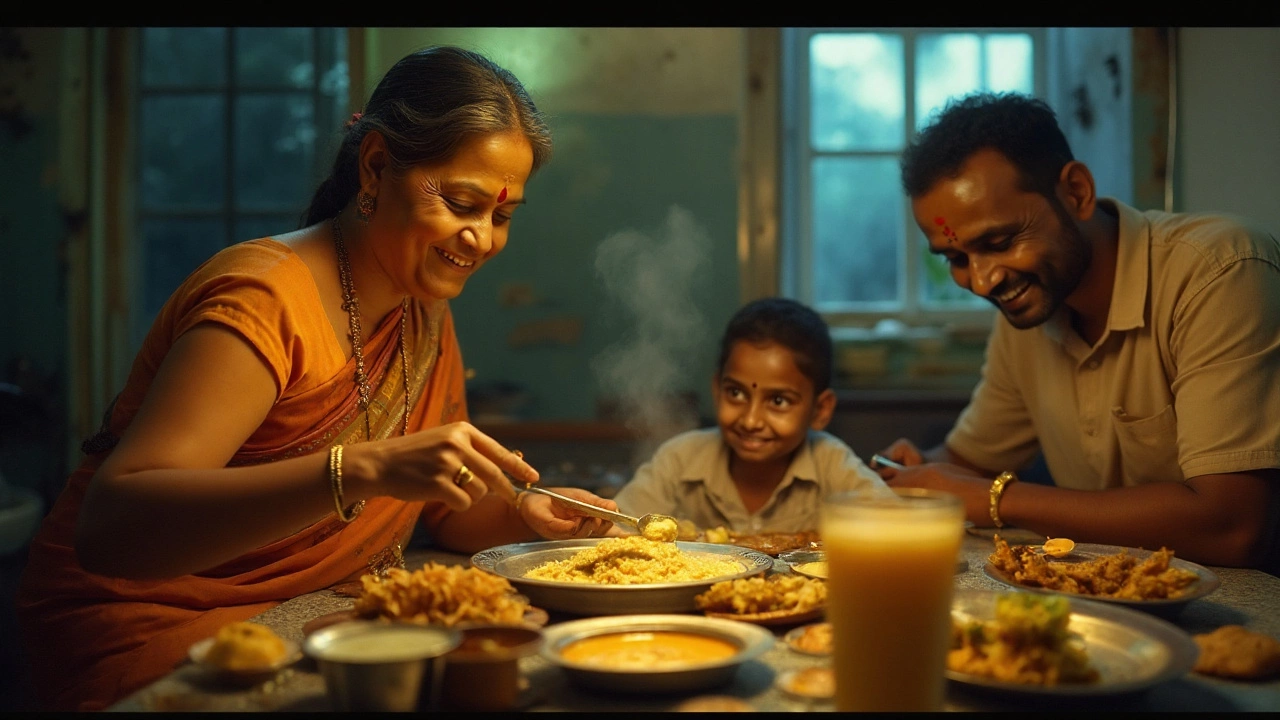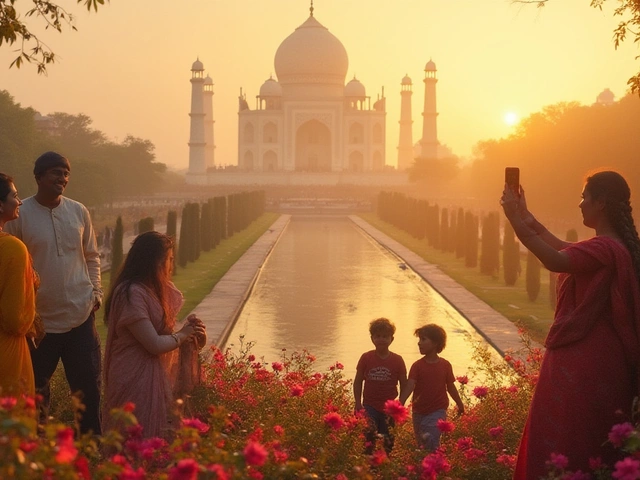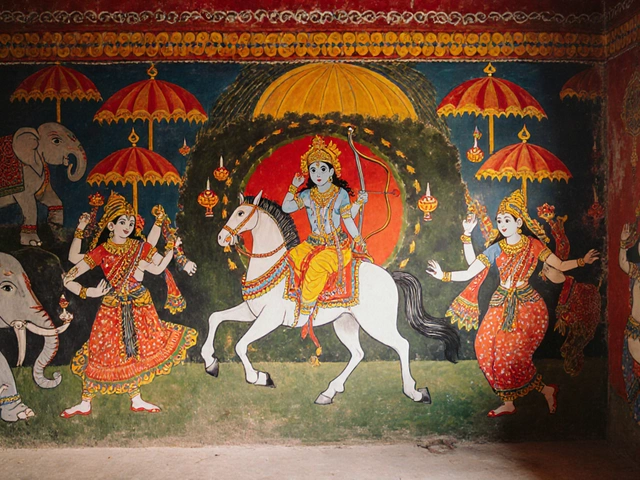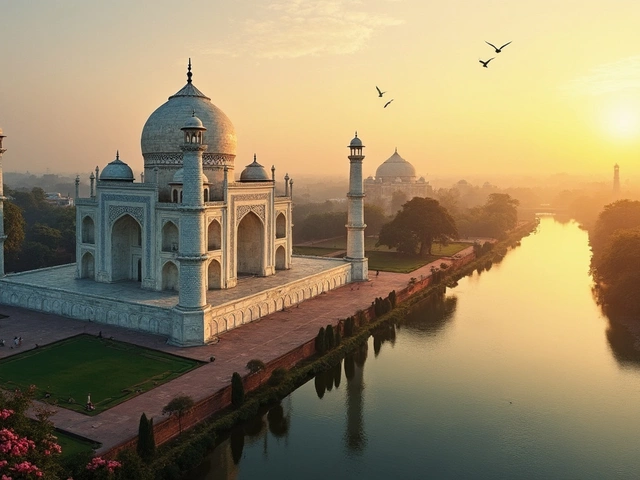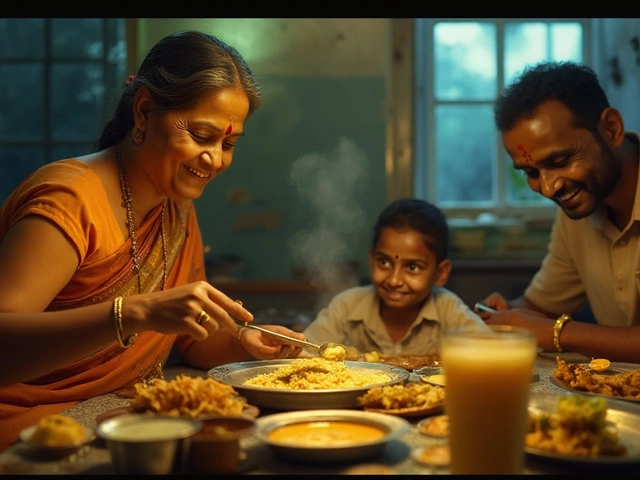You clicked hoping for one clean answer. Here it is: Gujarat doesn’t have an official “national dish.” India doesn’t have an official national dish either. But if you want the safe, real‑world answer people expect, say “Dhokla” for an iconic pick, “Undhiyu” for the festive star, and “Khichdi‑Kadhi” for everyday comfort. If you just want the quick answer to Gujarat national dish in a quiz, “Dhokla” will almost always land.
- TL;DR: No official dish. Dhokla = icon. Undhiyu = festival hero. Khichdi‑Kadhi = daily staple. “Gujarati thali” = full spread.
- If a test wants one name, choose Dhokla. If someone asks about winter traditions, say Undhiyu. If it’s about home food, say Khichdi‑Kadhi.
- Government angle: In 2017, India’s Press Information Bureau clarified India has no declared national dish; states don’t formally designate one either.
- Best on-the-ground move: Ask for a “Gujarati thali” to taste the range-often includes dhokla, kadhi, shaak (sabzi), rotli, rice, farsan, and sweet.
- Cooking at home? Start with instant dhokla; undhiyu is a weekend project; khichdi‑kadhi is weeknight easy.
The short answer: Is there really a “national dish” of Gujarat?
Short answer: no official status. The phrase “national dish of Gujarat” mashes two things that don’t fit. Gujarat is a state, not a nation, and neither the Government of India nor the Government of Gujarat has issued an official dish designation.
Why the confusion? In 2017, during World Food India, a large khichdi was cooked as a showcase of Indian comfort food. Several headlines implied khichdi was declared India’s national dish. India’s Press Information Bureau publicly clarified that no such designation exists. That moment stuck in people’s heads and keeps resurfacing.
So what do people mean when they say “Gujarat’s national dish”? Usually they’re asking for the state’s signature food-the dish that instantly says “Gujarati.” For that, most folks think “Dhokla.” On festive winter tables, it’s “Undhiyu.” Inside Gujarati homes on a regular day, it’s “Khichdi‑Kadhi.”
One more helpful angle: Gujaratis often talk in terms of the “Gujarati thali,” a balanced spread with sweet‑leaning flavors, farsan (savory snacks), shaak (vegetables), kadhi, rotli (flatbread), rice, pickles, and a sweet. If you’re visiting, asking for a thali is the fastest way to taste the cuisine’s soul.
Step-by-step: Pick the right answer for your situation
Not all questions are the same. Use this quick path to avoid awkward debates and still sound right.
Is this a quiz, trivia, or a short-form answer where you must pick one? Say “Dhokla.” It’s widely recognized as the Gujarati icon, from school quizzes to pop culture. Safer than naming a thali or a festival-only dish.
Is the person asking about festivals, winter, or Surat? Say “Undhiyu.” It’s the celebratory mixed-vegetable dish cooked slowly with seasonal produce, especially during Uttarayan (the kite festival) and the cooler months.
Is the context “daily home food” or “comfort bowl”? Say “Khichdi‑Kadhi.” Many Gujarati homes eat it weekly. It’s gentle, balanced, and budget-friendly.
Are you a traveler choosing a meal to understand Gujarat? Ask for a “Gujarati thali.” You’ll likely get a small piece of dhokla or khandvi, a couple of sabzis, kadhi, dal, rotli, rice, papad, pickle, and a sweet like shrikhand or mohanthal.
Are you cooking tonight and want the least-fuss option? Make instant dhokla (20-25 minutes) or a one-pot moong-dal khichdi (30 minutes). Undhiyu takes planning and a longer cooking window.
Heuristic you can trust: “Icon = Dhokla, Festival = Undhiyu, Everyday = Khichdi‑Kadhi, Full picture = Gujarati Thali.”
The contenders: what they are, how they taste, and a simple way to try each
Here’s what people actually eat and why these dishes carry the flag for Gujarat.
Dhokla (the icon)
- What it is: A steamed, spongy cake made from fermented batter-traditionally rice and chana dal (khaman is a close cousin using gram flour). Tempered with mustard seeds, green chili, curry leaves, and a splash of sweetened lemon water.
- Why it matters: Light, vegetarian, travels well, works as breakfast, snack, or party food. It captures Gujarat’s mild-sweet-savory balance.
- Taste/texture: Airy, tangy from fermentation, softly sweet, with chili warmth and a gentle crunch from mustard seeds and sesame.
- Try this at home (quick method):
- Mix 1 cup gram flour (besan), 1 tbsp semolina, 1 tsp sugar, 1 tsp lemon juice, 1 tsp grated ginger-green chili paste, salt, and water to a pourable batter; rest 5-10 minutes.
- Right before steaming, stir in 1 tsp fruit salt (ENO). Pour into a greased, hot steamer tray.
- Steam 12-15 minutes. Cool 2 minutes, unmold, cut squares.
- Temper 1 tbsp oil with 1 tsp mustard seeds, pinch asafoetida, sliced green chili, curry leaves; pour over. Finish with chopped coriander and coconut.
Undhiyu (the festival hero)
- What it is: A slow-cooked winter dish from Surat/Kathiyawad. Mix of seasonal veggies (purple yam, baby potatoes, raw bananas, eggplant, broad beans/tuvar lilva) with methi muthia (fenugreek dumplings), coated in a spiced coriander-coconut-peanut masala. Traditionally cooked upside down in earthen pots buried under coals (“undhu” = upside down).
- Why it matters: Seasonal, communal, celebratory. It shows the Gujarati approach to sweet-salty-spicy harmony and clever use of winter produce.
- Taste/texture: Deep, nutty, herby, hint of sweetness, slightly rustic from yams and muthia. Saucy but not soupy.
- Try a simplified home version:
- Make the masala: Blend coriander leaves, fresh coconut, roasted peanuts, sesame, ginger, green chili, garlic (optional), lemon juice, sugar/jaggery, garam masala, turmeric, salt, and a splash of oil into a thick paste.
- Toss cut vegetables in the masala; stuff baby eggplants with it. Pan-fry methi muthia or use store-bought.
- In a heavy pot, heat oil, add ajwain (carom) and a pinch asafoetida. Layer the veggies, sprinkle water, add muthia on top. Cook covered on low until everything is tender (30-45 minutes). Don’t stir hard; tilt and rotate instead.
- Finish with coriander and a squeeze of lemon. Serve with puri or rotli.
Khichdi‑Kadhi (the comfort staple)
- What it is: Khichdi is a soft rice-and-dal one-pot; kadhi is a yogurt‑gram flour curry with a sweet note. Together they’re the midweek hug.
- Why it matters: Shows Gujarat’s love for balance-light spice, a touch of sweetness, and easy digestion. It’s what many homes cook when they’re tired, sick, or just want something soothing.
- Taste/texture: Khichdi is soft and mild; kadhi is silky, lightly tangy, a little sweet, with a mustard-cumin-curry leaf perfume.
- Try it tonight:
- Khichdi: Rinse 1/2 cup rice + 1/2 cup split moong. Temper ghee with cumin, optional bay leaf, ginger. Add rice-dal, turmeric, salt, 3-3.5 cups water. Pressure cook to soft.
- Kadhi: Whisk 1 cup yogurt, 2 tbsp besan, 2 cups water, salt, pinch sugar. Temper ghee/oil with mustard, cumin, methi seeds, curry leaves, green chili, asafoetida. Add yogurt mix; simmer gently 8-10 minutes. Finish with coriander.
Where does the Gujarati thali fit?
Think of it as the sampler that tells the cuisine’s story in one tray. A typical thali might include: farsan (dhokla or khandvi), two sabzis (often one dry, one with gravy), dal or kadhi, rotli/rotla/puri, rice or khichdi, salad/kachumber, chutneys, pickle, papad, and a sweet like shrikhand or basundi. It changes by city, season, and the cook’s roots.
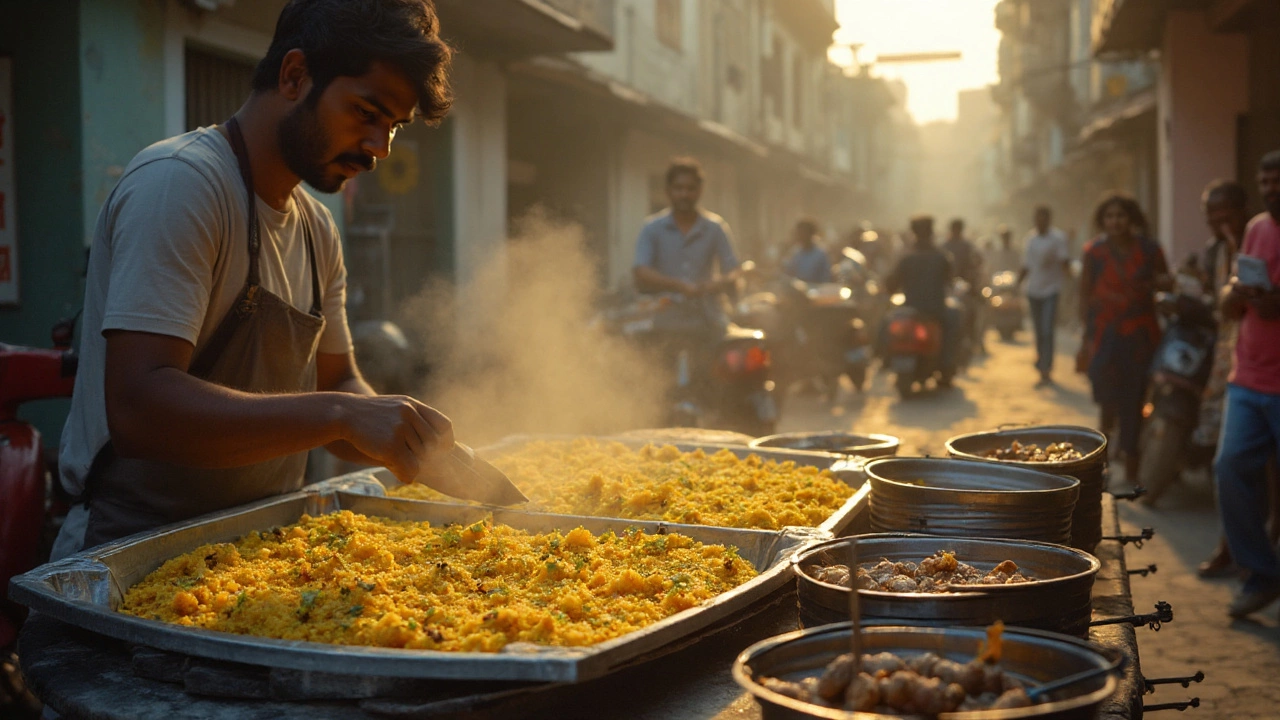
Cheat sheet, comparison table, and regional notes
Here’s a tight comparison you can reference fast, plus regional flavors that shift the answer slightly.
| Dish | Best context to say it | Key ingredients | Flavor profile | Region/season notes |
|---|---|---|---|---|
| Dhokla | Quizzes, iconic/representative pick | Gram flour/rice+dal batter, fruit salt, mustard, chili, lemon | Light, tangy, mildly sweet, airy | Pan-Gujarat; common in thalis and snack shops year-round |
| Undhiyu | Festivals, winter, Surat/Kathiyawad pride | Seasonal veggies, methi muthia, coriander-coconut-peanut masala | Herby, nutty, sweet-salty-spicy balance | Peak in winter; strong in Surat/Saurashtra |
| Khichdi‑Kadhi | Home food, comfort, everyday | Rice, moong dal, yogurt, besan, mild spices | Soft, soothing, mildly tangy-sweet | Common across Gujarat; varies by family |
| Gujarati Thali | Touring/tasting the cuisine broadly | Farsan, sabzis, dal/kadhi, rotli, rice/khichdi, sweet | Diverse, balanced, often slightly sweet | Changes by city (Ahmedabad, Rajkot, Surat), season, and eatery |
Regional notes that matter when locals answer:
- Surat and South Gujarat lean hard into Undhiyu in winter; you’ll hear it named proudly during Uttarayan.
- Kathiyawad (Saurashtra) has a punchier spice profile; thalis may include garlic-heavy lasaniya bataka and bajra rotla.
- Kutch brings in puffs of heat and rustic breads like dabeli (a street‑food export) and bajra staples.
- Ahmedabad snacks love: dhokla, khandvi, patra, and handvo show up everywhere-from homes to office tiffins.
Checklist: sound correct and helpful in one breath
- Don’t claim an official “national dish” for a state.
- Use the situation: Icon = Dhokla; Festival = Undhiyu; Daily = Khichdi‑Kadhi; Big picture = Gujarati thali.
- When teaching kids or prepping for quizzes, standardize on “Dhokla,” and mention that it’s conventional, not government-declared.
- Ordering out? Choose a thali first visit; on the second, chase a good undhiyu if it’s winter.
- Cooking at home tonight? Start with instant dhokla or moong-dal khichdi; save undhiyu for a Saturday.
Examples: how this plays out in real life
School quiz scenario
Question: “What is Gujarat’s national dish?” A crisp, non-controversial answer teachers expect: “Dhokla.” If time allows, add: “It’s not official, but it’s the best-known Gujarati dish.”
Travel conversation in Ahmedabad
Someone asks what to try first. Say: “Get a Gujarati thali. You’ll probably find dhokla in the farsan, and if it’s winter, ask whether they’re serving undhiyu.” You’ll come across as curious and respectful of seasonality.
Festival visit in Surat (January)
Locals will point you toward undhiyu and jalebi. If you ask about a “state dish,” people may smile and say “Undhiyu, of course,” because it’s top of mind during Uttarayan.
At home on a weeknight
Need something easy? Khichdi‑Kadhi is a 30-40 minute meal. Use a pressure cooker for the khichdi and simmer kadhi gently to avoid curdling. Finish with a quick ghee tadka for aroma.
Dietary check
- Vegetarian: All four options (dhokla, undhiyu, khichdi, kadhi) are vegetarian.
- Vegan: Dhokla and undhiyu are easily vegan. Khichdi can be vegan if cooked in oil. Kadhi is dairy-based; swap with a dal or a coconut-curd alternative if needed.
- Gluten-free: Dhokla (traditional) and khichdi are typically gluten-free; watch asafoetida brands and semolina additions. Undhiyu is gluten-free if muthia use besan rather than wheat.
Mini‑FAQ and what to do next
FAQ: the follow-ups you’ll likely get
Is India’s national dish khichdi?
No. During World Food India 2017, a massive khichdi was cooked to showcase comfort food. India’s Press Information Bureau stated there’s no declared national dish.
Did Gujarat ever declare a state dish?
No formal declaration from the Gujarat government. Culturally, people will name dhokla or undhiyu depending on context.
Is dhokla the same as khaman?
They’re close but not identical. “Khaman” typically uses gram flour (besan) and is softer and more yellow; “khaman dhokla” is the term many shops use. Traditional “dhokla” can involve fermented rice and chana dal batter (like khatta dhokla). Street menus often blur the lines.
What’s the best time to try undhiyu?
Winter, especially around Uttarayan (mid‑January). The produce-lilva, raw bananas, yams-is peak then.
Is Gujarati food always sweet?
Not always, but a light sweet note is common in kadhi and some sabzis. Regional pockets like Kathiyawad can be quite spicy. Balance is the theme.
Why do Gujarati thalis vary so much?
Season, city, and the cook’s roots. An Ahmedabad thali may lean snacky; a Rajkot or Jamnagar thali might show millet breads and garlic; Surat will include winter specials like undhiyu when in season.
Next steps: eat, cook, or answer with confidence
- If you need a one‑word answer: say “Dhokla,” then, if asked, explain it’s the iconic choice, not an official designation.
- Travel plan: Hunt a Gujarati thali on day one. In winter, ask about undhiyu. In markets, look for farsan counters with dhokla, khandvi, and patra.
- Home cooking: Start with instant dhokla this week. Put undhiyu on a weekend plan, and keep khichdi‑kadhi for comfort nights.
Troubleshooting quick wins (kitchen edition)
- Dhokla didn’t rise? Check that the steamer was preheated, fruit salt was fresh, and you mixed it in right before steaming. Batter should be pourable, not thick.
- Dhokla turned dense or bitter? Too much fruit salt or old besan can do that. Measure level teaspoons and use fresh besan.
- Kadhi curdled? Heat low and steady; whisk yogurt and besan very smooth; add a ladle of hot water to temper before combining; avoid fast boil.
- Undhiyu too dry? Add a splash of warm water and a bit more oil while cooking; keep the pot covered and use low heat. Don’t over‑stir-tilt to mix.
- Khichdi too thick? Stir in hot water to loosen; it naturally thickens as it rests. Adjust salt after thinning.
Credibility notes (so you can quote this safely)
- Official status: India’s Press Information Bureau (2017) clarified there is no declared national dish; by extension, states typically do not have official dishes.
- Cultural context: Gujarat Tourism materials and standard regional cookbooks consistently highlight dhokla and undhiyu as emblematic, with khichdi‑kadhi as common home fare.
If you remember just one sentence: There’s no official national dish of Gujarat; say “Dhokla” for the iconic answer, “Undhiyu” for festivals, and “Khichdi‑Kadhi” for home comfort-and ask for a Gujarati thali if you want the full story on a plate.
